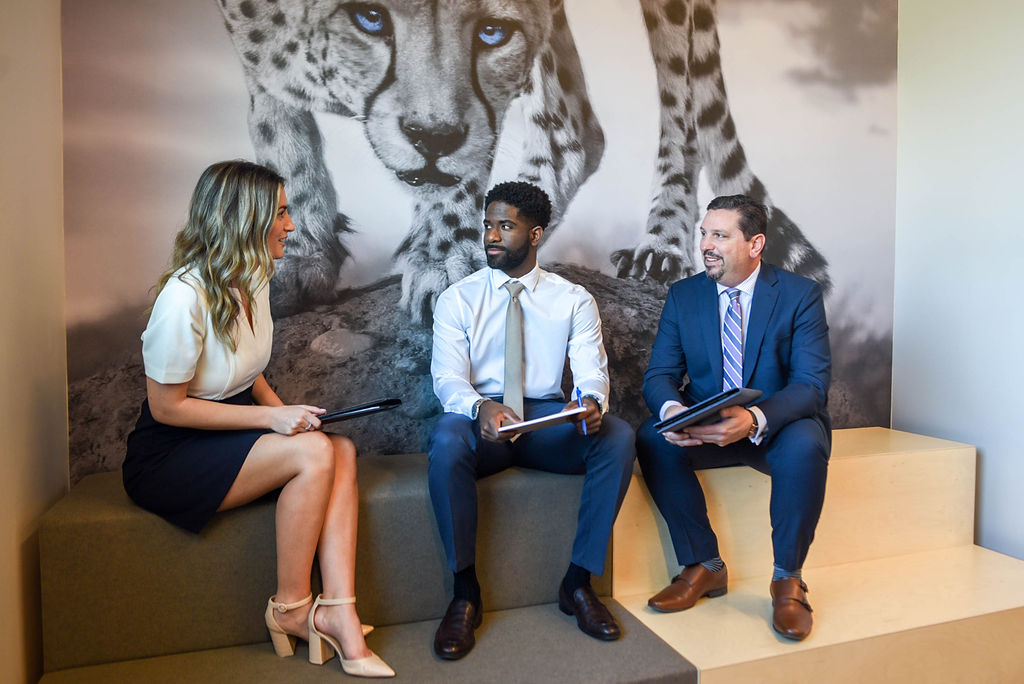Distraction: The Silent Killer of Workplace Relationships
by Julie Turpin, Chief People Officer at Brown & Brown Insurance
Distraction has been referred to as the ‘21st-century syndrome.’ Even before the pandemic and debates around remote work culture, modern distractions impacted 62% of the workforce.
While distraction itself is not a new phenomenon, its prevalence and impact have undeniably intensified with the internet, smartphones, social media and constant connectivity. The modern world is full of channels and responsibilities constantly bidding for our attention, but very few people can multitask effectively.
Beyond the loss of productivity and a greater chance for error, the real damage of distraction to your career is its impact on your workplace relationships. Divided attention can lead to misunderstandings, missed opportunities for collaboration and disengagement. The effect happens on both ends of the interaction as well.
Whether you’re distracted or on the receiving end of a coworker’s or leader’s distraction, you feel it, and when relationships are a primary cornerstone of professional development and progression, so does your career.
3 INDICATORS OF BEING PRESENT
Being present involves three essential verbal and non-verbal elements: words, body language and listening skills.
The most obvious and active demonstration of presence is our words. The words we use carry weight. They reflect our engagement and understanding of what we are experiencing or what is being communicated to us.
However, just as important is the presence we display in our non-verbal cues or body language: maintaining eye contact, nodding and leaning forward to demonstrate active participation and attentiveness.
In today’s virtual work environment, body language includes what is experienced across screens. Turning off the camera is a tactic used by 72% of distracted or multitasking employees on video calls, and for the other members of the call, it is a clear sign of your disengagement.
Finally, listening skills allow you to be present in words and actions. Active listening is more than just hearing; it requires focused attention on the speaker, comprehension and providing appropriate verbal and non-verbal responses.
At a recent leadership workshop, I spoke on the importance of being present and mindful at work. As leaders, we can easily assume the role of solver, but our team members often just need us to listen. Active listening is one of the best ways to show our support and a great way to get to the root of any issue or challenge. When you’re listening and asking questions, you can unearth the real problem.
BEST PRACTICES FOR BEING PRESENT AT WORK
Mindfulness is a skill, and like any skill, it needs to be cultivated. Here are five practical ways you can change your habits and mindset to be more present at work:
- Focus on one meeting at a time. Devices, social media and responsibilities outside of work are not the only attention thieves. Work priorities often take attention away from each other. For example, you’re distracted if you’re still thinking about your 9 a.m. meeting during your 10 a.m. one-on-one. To show up fully for your colleague at 10 a.m., you need to let the previous meeting go and avoid carrying over unresolved issues. A good habit to build is giving yourself 15-minute buffers (if possible) between meetings to wrap up loose ends, write any final notes and clear your mind.
- Take time to transition from task to task. This buffer rule includes in-between tasks as well. Cultivating a habit of mindful transitions that allow you to briefly reflect on what you’ve accomplished, set intentions for the upcoming project and organize your workspace can help you optimize your focus, productivity and effectiveness.
- Minimize physical distractions. It’s become commonplace for everyone to bring their phones to meetings, but the presence of one’s phone can often disrupt one’s ability to effectively retain information. When we leave our phones outside the meeting, we not only actively show our peers more respect but also give ourselves more brain space for the task at hand.
- Listen to understand and ask questions. When we listen with the intention of understanding, we can pick up on micro messages or subtle cues that convey nuances and emotions beyond the words people are saying. Listening from a place of ego-free openness and asking questions builds trust and allows us to build more meaningful connections.
- Check in with yourself. Like any other practice, being present at work takes awareness, repetition and reflection. Ask yourself: are your actions creating the types of relationships you aspire to have? It can be easy to blame other people or outside factors for our distraction or disengagement, but ultimately, it’s our responsibility to build the habits and mindset necessary for presence and productivity.
FINAL THOUGHTS
The odds are that the world will only get more distracting, but we have the power to consciously design our habits around the lifestyle and work style we want. The habits we build at work inevitably influence the dynamics of our professional relationships and how we show up for others. Don’t let distractions kill your workplace relationships. Take ownership of your attention and intention, and strive to be fully present in each moment.

PurposeFULL Leadership
How Personal & Professional Growth Can Help You Lead A Fullfilled Life
by Julie Turpin, Chief People Officer at Brown & Brown Insurance
Subscribe to Julie’s PurposeFULL Leadership and view this blog on LinkedIn here.








